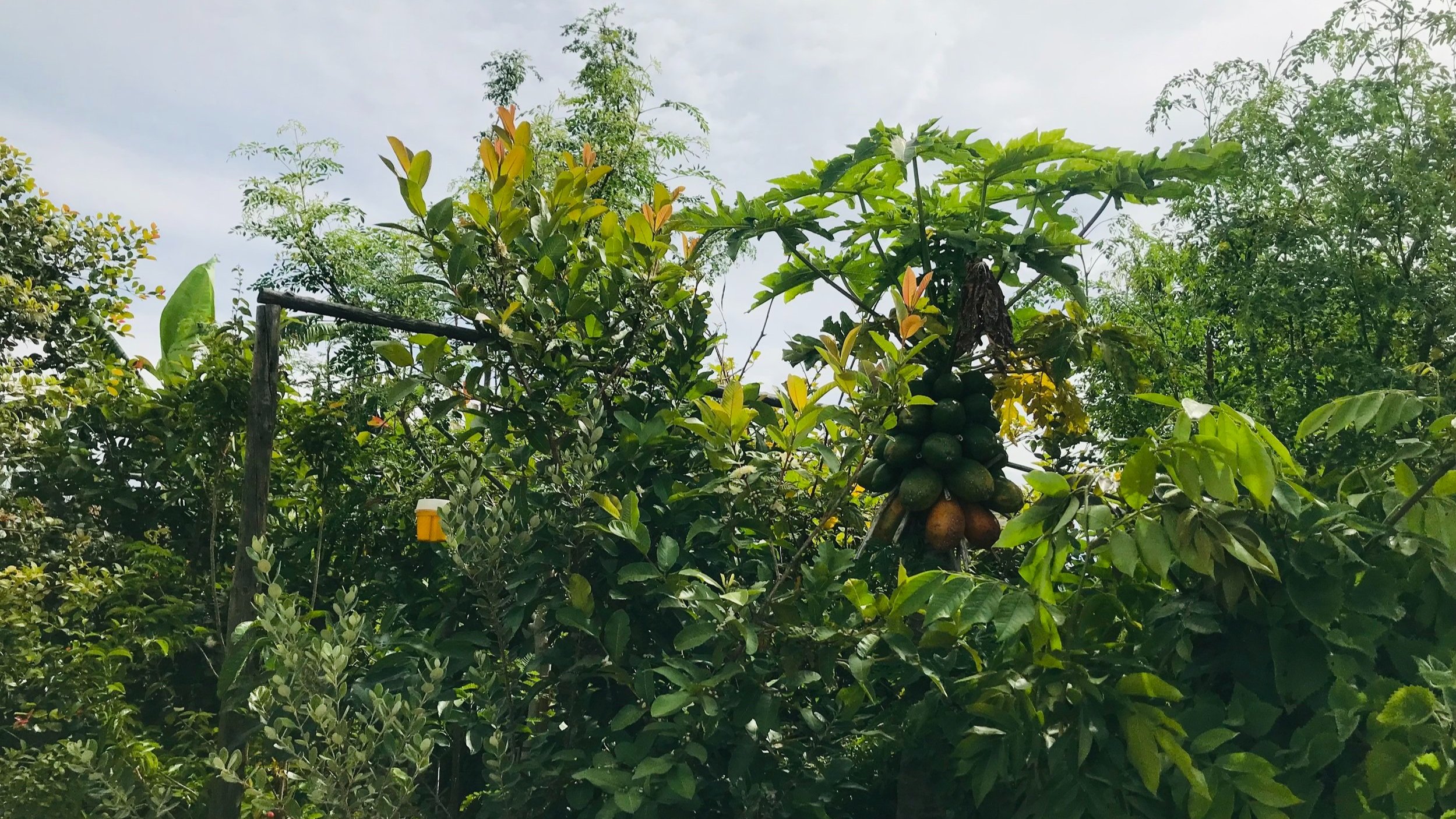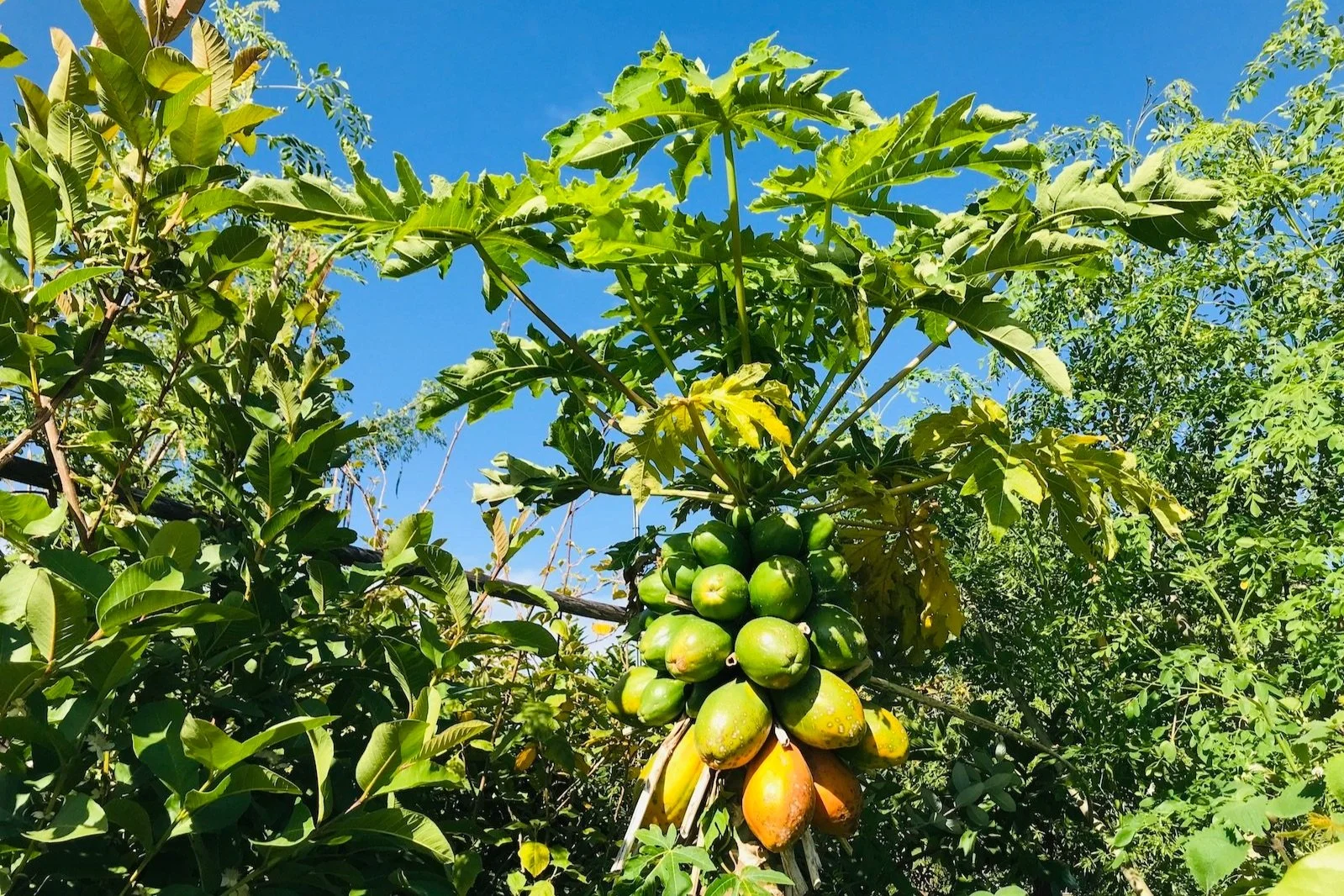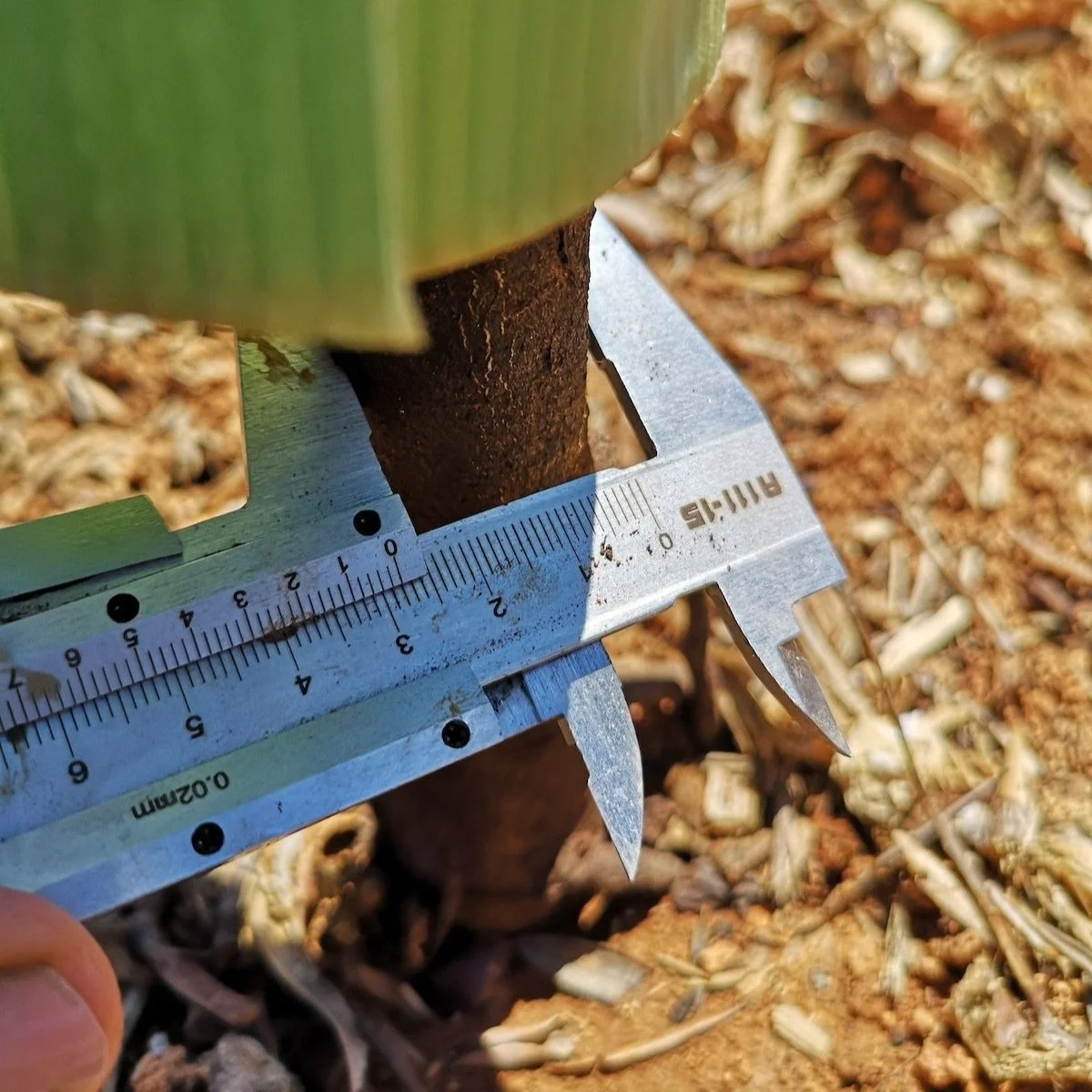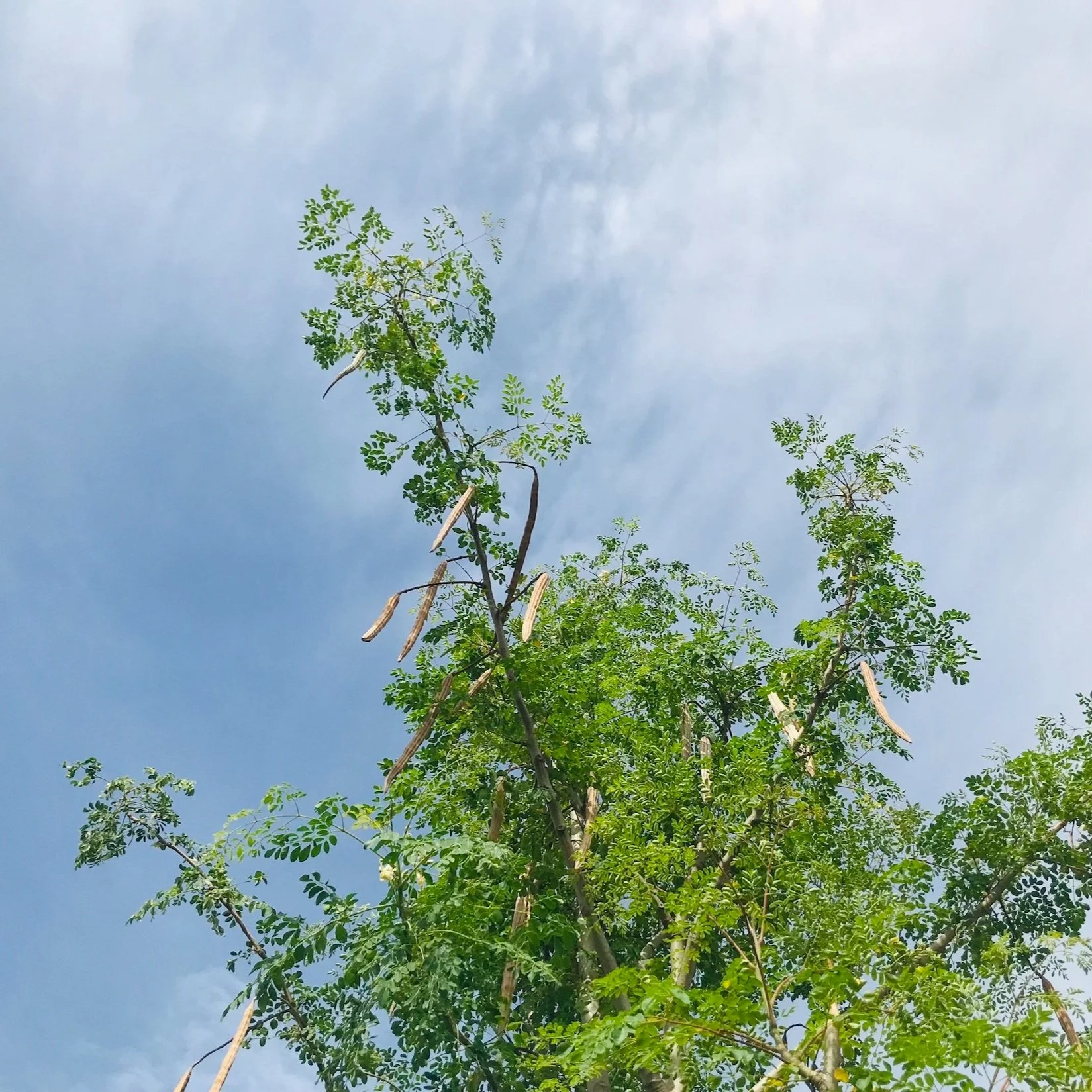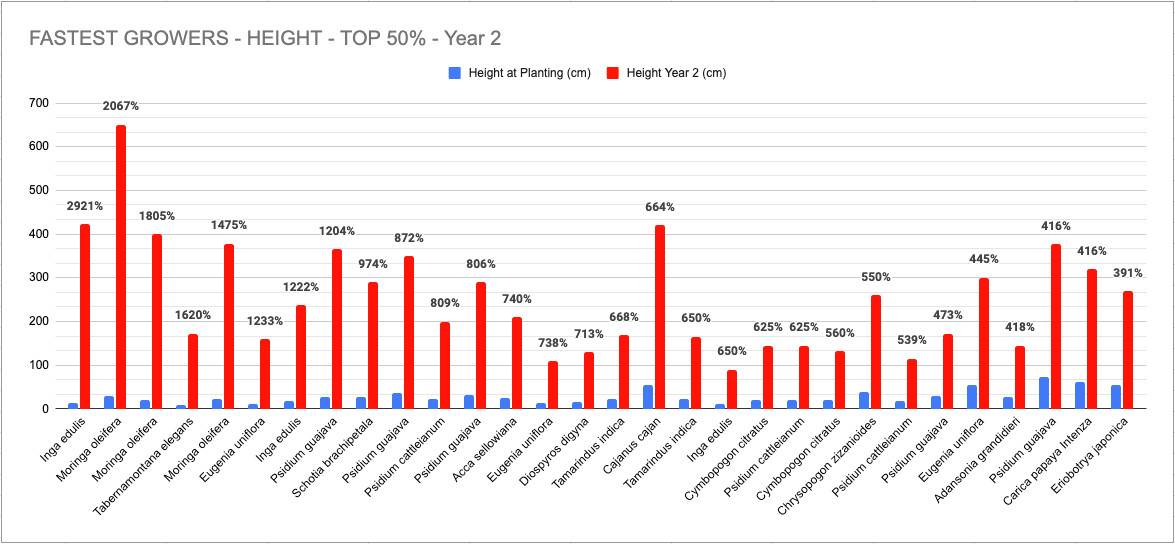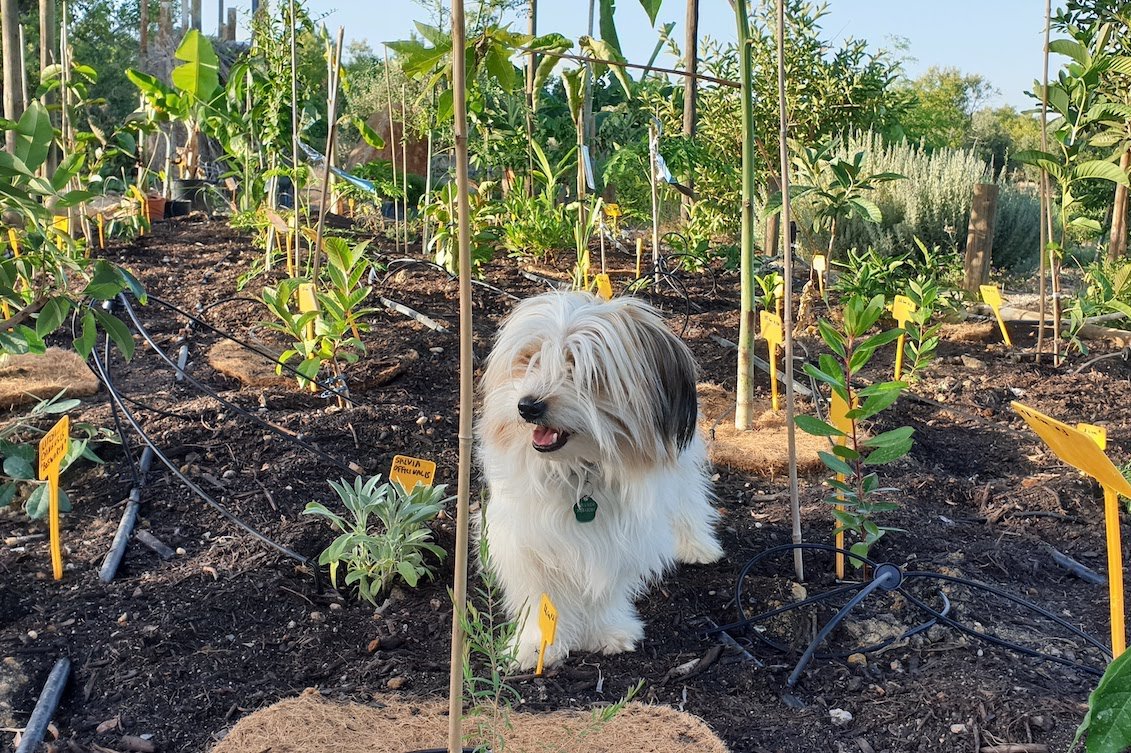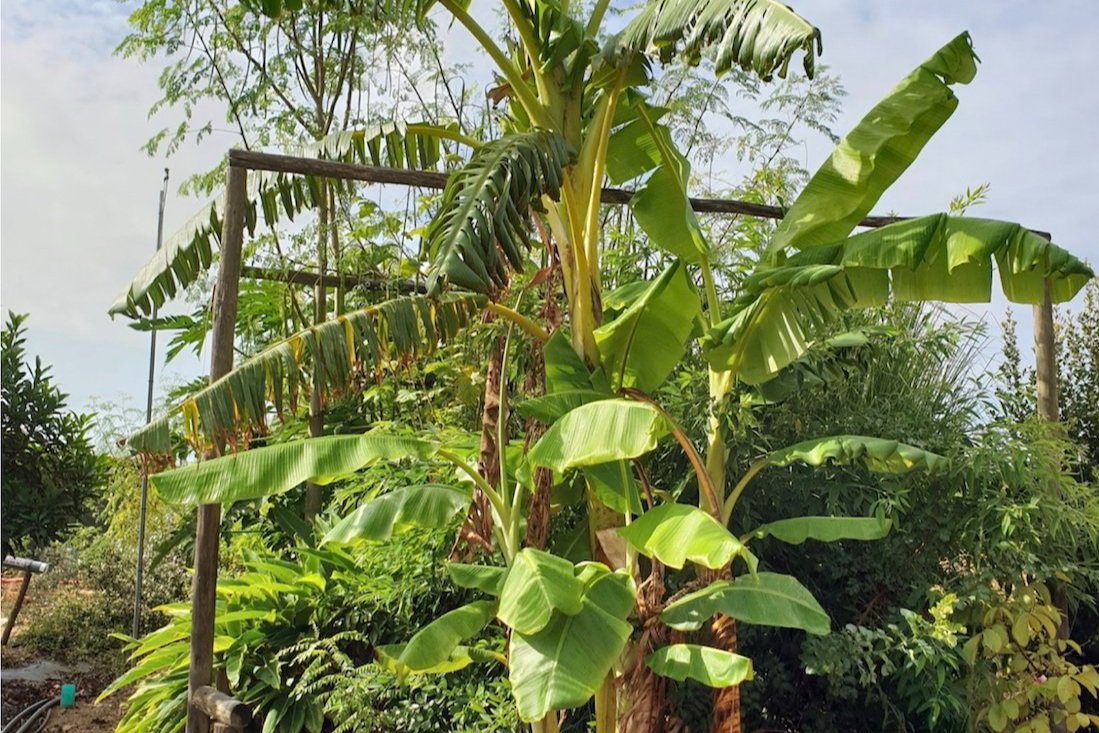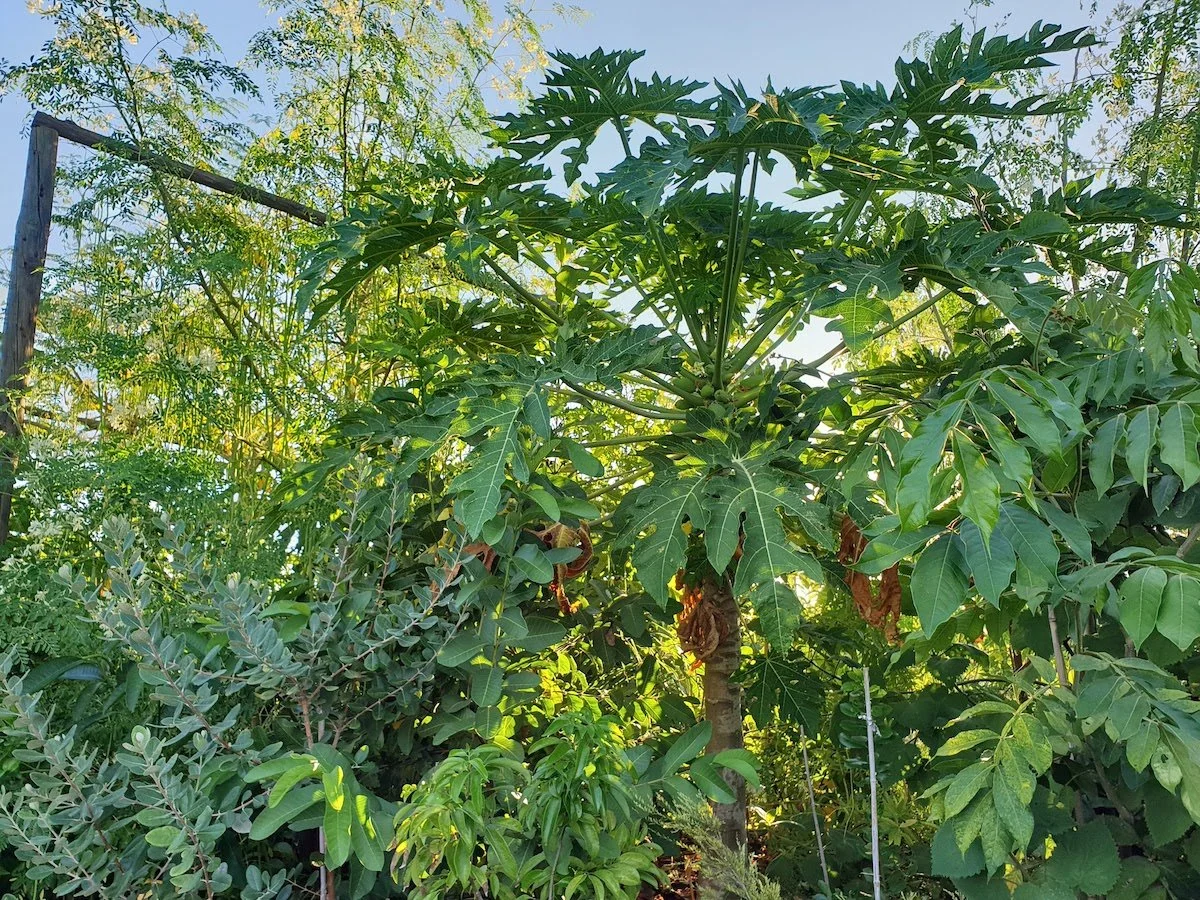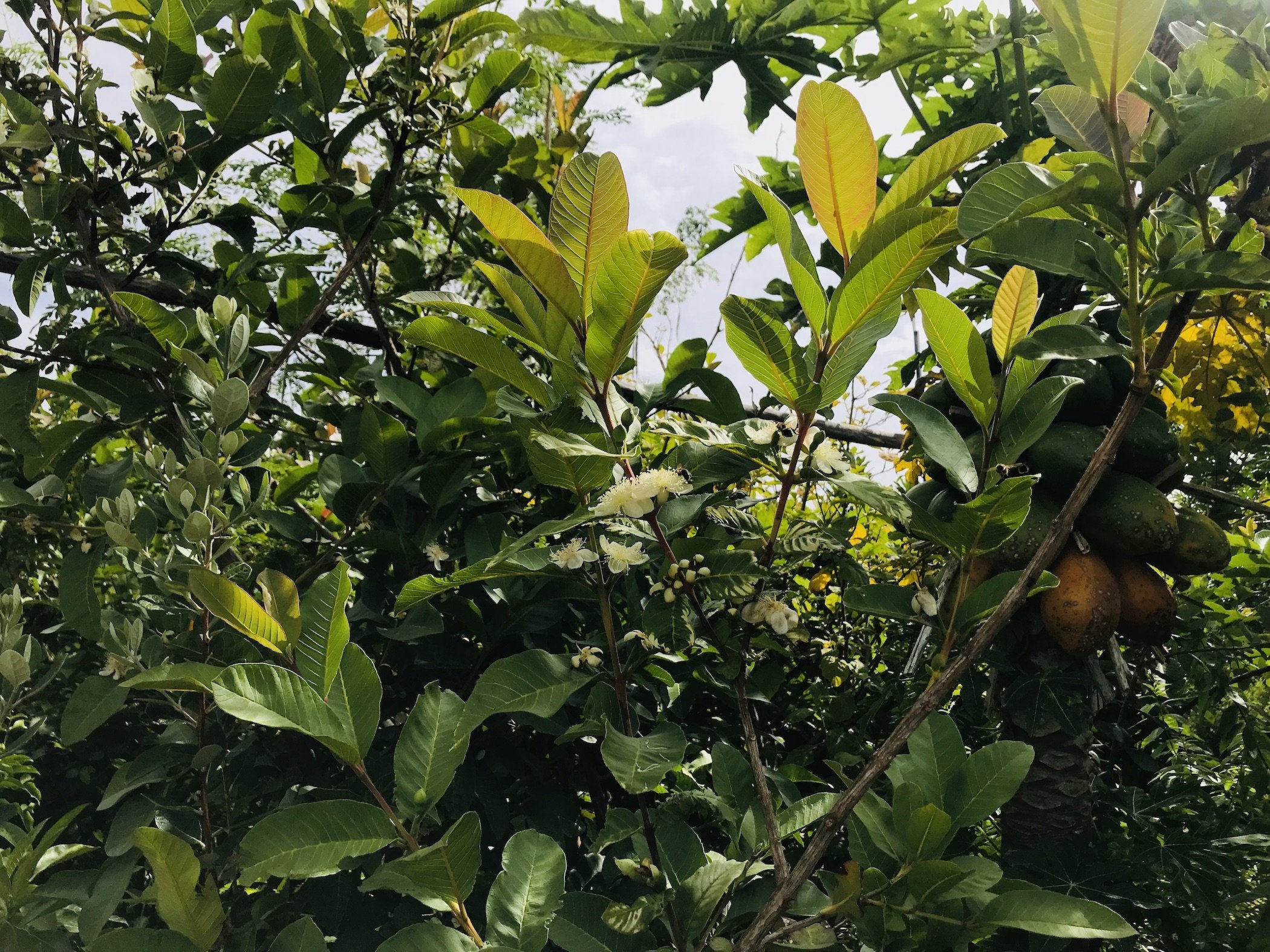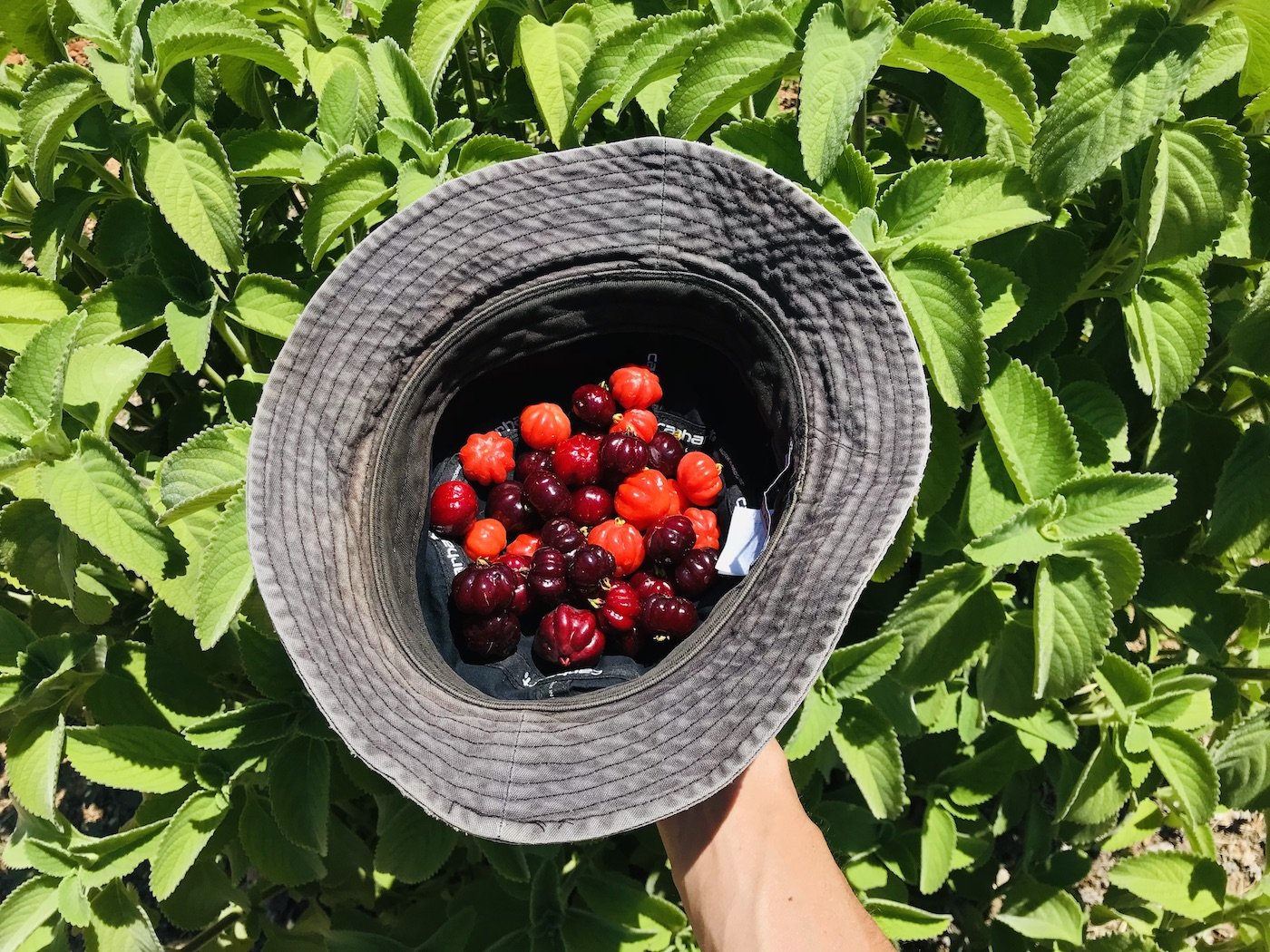Wild & High Density Food Forest - Miyawaki Inspired
Our very first experiment, and the wildest one! In this first fully-edible Miyawaki forest, all 65 plants (of 33 species) were randomly placed on a 21m² area, for a density of 3 trees for every square meter. For sure, some fruit but no way to anticipate which fruit tree will be happy and produce fruits. In this experiment, conducted in July 2021, we followed most elements of the Miyawaki protocol, except that all plants are perennial edible species, and most are not indigenous.
Protocol:
Soil preparation: decompaction at 80 cm, 15% plain compost, 5% composted horse manure
Density of 3 plants per m²
Planted randomly
Size: 24 m²
Assessment: (1 *: low to 5 *: high)
Growth rate: ⧫ ⧫ ⧫ ⧫ ⧫
Ultra-fast during the first two years. From the third year, growth does not seem faster than trees planted in a less dense environment.Resilience (biodiversity and quality of soil microbiology): ⧫ ⧫ ⧫ ⧫ ⧫
Probably very good, providing habitat for several insects, birds, frogs, etc.Quantity, quality, and predictability of fruit production: ⧫
Very disappointing except for a few fragile trees that benefited from the dense environment (Papaya, Tamarillo) or for fruit trees that like shade. Most other fruit trees produce either nothing or much less than a tree planted in a less dense environment.Maintenance: ⧫ ⧫ ⧫ ⧫
Too dense and very difficult to maintain.Cost-effectiveness: ⧫ ⧫ ⧫ ⧫
Very expensive (lots of inputs for very little output).Scalability: ⧫
Difficult to implement on a large area.
Water efficiency: ⧫ ⧫
After one year, 36 liters per m²/day during the summer period.
A similar concept has been developed since July 2023 by The Biggest Miniforest, inspired by both the Miyawaki approach and Syntropic farming techniques. Several “Biggest Mini Forests” have been installed in the Botanical Garden in 2023 and 2024. To learn more about the Biggest Mini Forest click here.
Very productive Carica papaya in our 2-year-old Wild & High Density Food Forest, July 2023
Wild & High Density Food Forest - Miyawaki Inspired
The Specifics:
Planting date: July 2021
Area: 21m²
Number of species: 33
Total of plants: 65
Planting density: ~3 trees/m²
All plants were randomly placed, not following any pattern (hence “Wild”), except in avoiding positioning two trees of the same species next to each other
For more details on the method of growing Miyawaki forests, make sure to read the main Miyawaki-inspired Food Forests article. We also provide further reading on the subject in our extensive Insights from Miyawaki and Syntropic learn article.
Planting the Wild Food Forest experiment, back in July 2021
The expected results:
Very fast and healthy growth
High productivity
Some plants, in being planted at random, would not survive
High protective effect (wind and frost)
Fewer pests & diseases
Data monitored:
Plant height
Trunk diameter at 20% of the total height
Food production
Average water usage
Plant survival rate
Pests & diseases
Measuring a tree trunk diameter at 20% height
One of our Moringa oleifera went from 30cm to 6-meter-tall in the first 2 years (!)
Assessment after two years (July 2023)
15 trees reached between 6 and 10 times their initial height (eg. Psidium guajava, Tamarindus indica)
as an example, a Psidium guajava (guava) gained 872% in height, from 36cm to 3.50 meters
9 other plants increased over 10 times their initial height (eg. Moringa oleifera, Inga edulis)
notice in the graph below how the fastest growing plant, Inga edulis (ice-cream bean), gained almost 3000% in height, from 14cm to 4.23 meters (that’s over 30x its initial height! ⚠️)
Death rate is minimal (three plants that died because they needed more sun and were randomly planted)
Regarding protection/health: plants of Carica papaya, Solanum betaceum, Tamarindus indica, species considered to be frost tender and not wind resistant, are all alive and healthy, and even producing (except for the Tamarindus, for now)
Three spiky plants had to be removed in September 2023 because of their danger in a dense environment, namely in the species Pereskia aculeata and Solanum oocarpum
14 plants already gave generous yields, in species like Psidium guajava, Musa "Lep Chang Kut" and Carica papaya (fruit), Moringa oleifera (pods) and Eugenia uniflora (berries)
On this graph, you can see which plants grew the most, in height, on the first 2 years of the Miyawaki-inspired Wild Food Forest experiment. The labels (in %) show how much each plant grew in these 2 years.
For easier reading of the graph, we included only half of all the plants growing in this Food Forest. The 50% which grew the most in height, naturally.
For a list of the common names of each species of plant shown, please keep scrolling down.
Species in this Food Forest
Acca sellowiana — feijoa
Adansonia grandidieri — giant baobab
Aloysia citrodora — lemon verbena
Annona cherimola — cherimoya
Annona squamosa — custard apple
Arbutus unedo — strawberry tree
Cajanus cajan — pigeon pea
Carica papaya (different varieties) — papaya
Carissa macrocarpa — Natal plum
Chrysopogon zizanioides — vetiver
Citrus reticulata — mandarin orange
Cymbopogon citratus — lemongrass
Diospyros digyna — black sapote
Eriobotrya japonica — loquat
Eugenia uniflora (different varieties) — Surinam cherry
Inga edulis — ice-cream bean
Litchi sinensis — lychee
Mangifera indica — mango
Melaleuca thymifolia — tea tree
Microcitrus australasica — finger lime
Moringa oleifera — moringa
Morus nigra — black mulberry
Murraya koenigii — curry tree
Musa "Lep Chang Kut" — banana
Pereskia aculeata — ora-pro-nobis
Psidium cattleianum (different varieties) — strawberry guava
Psidium guajava (different varieties) — guava
Salvia officinalis — common sage
Solanum betaceum — tree tomato
Solanum oocarpum — Brazilian sunberry
Tabernaemontana elegans — toad tree
Tamarindus indica — tamarind
Thymus officinalis — common thyme
Make sure to check out our main article on Miyawaki-inspired Food Forests and our Theoretical Foundations where we explain the whole concept and how we’re putting it in action at the Orchard of Flavours site. Also, don’t forget to compare this Experiment with all the others already growing:
Organised & Low Density Food Forest
Organised & High Density Food Forest
Highly Organised & Medium Density Food Forest
This article was compiled by Miguel COTTON & Miguel PEREIRA. If you have any questions or suggestions, do not hesitate to contact us. Please write us anytime at miguel@orchardofflavours.com

